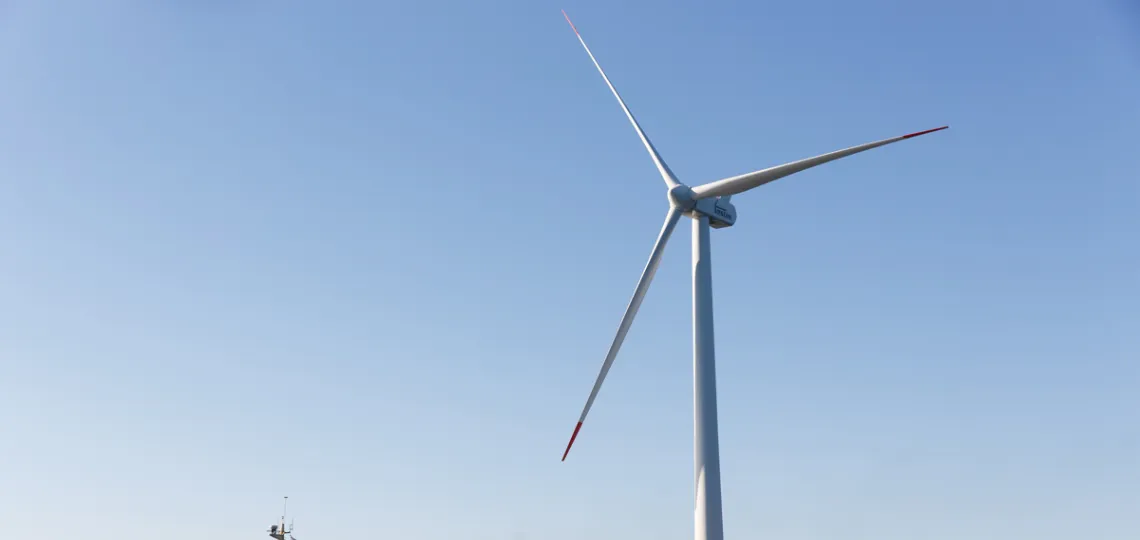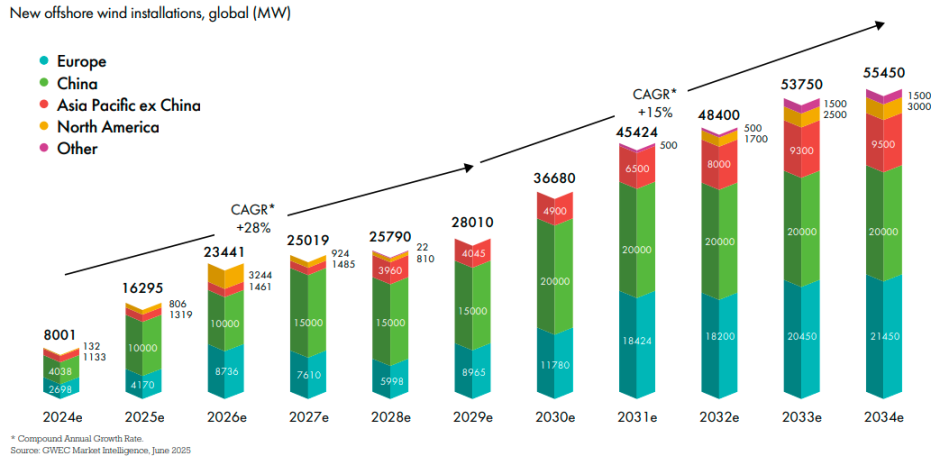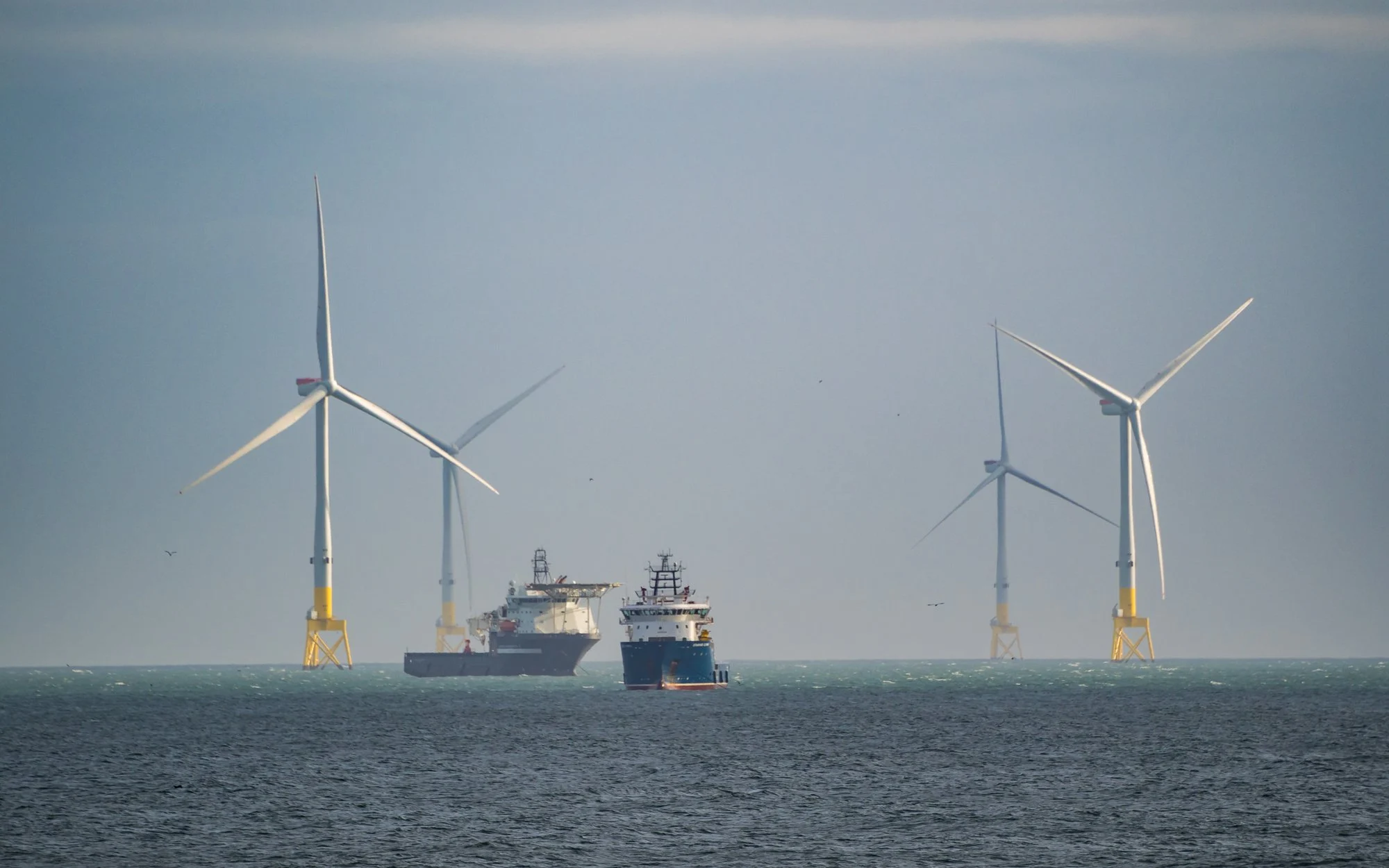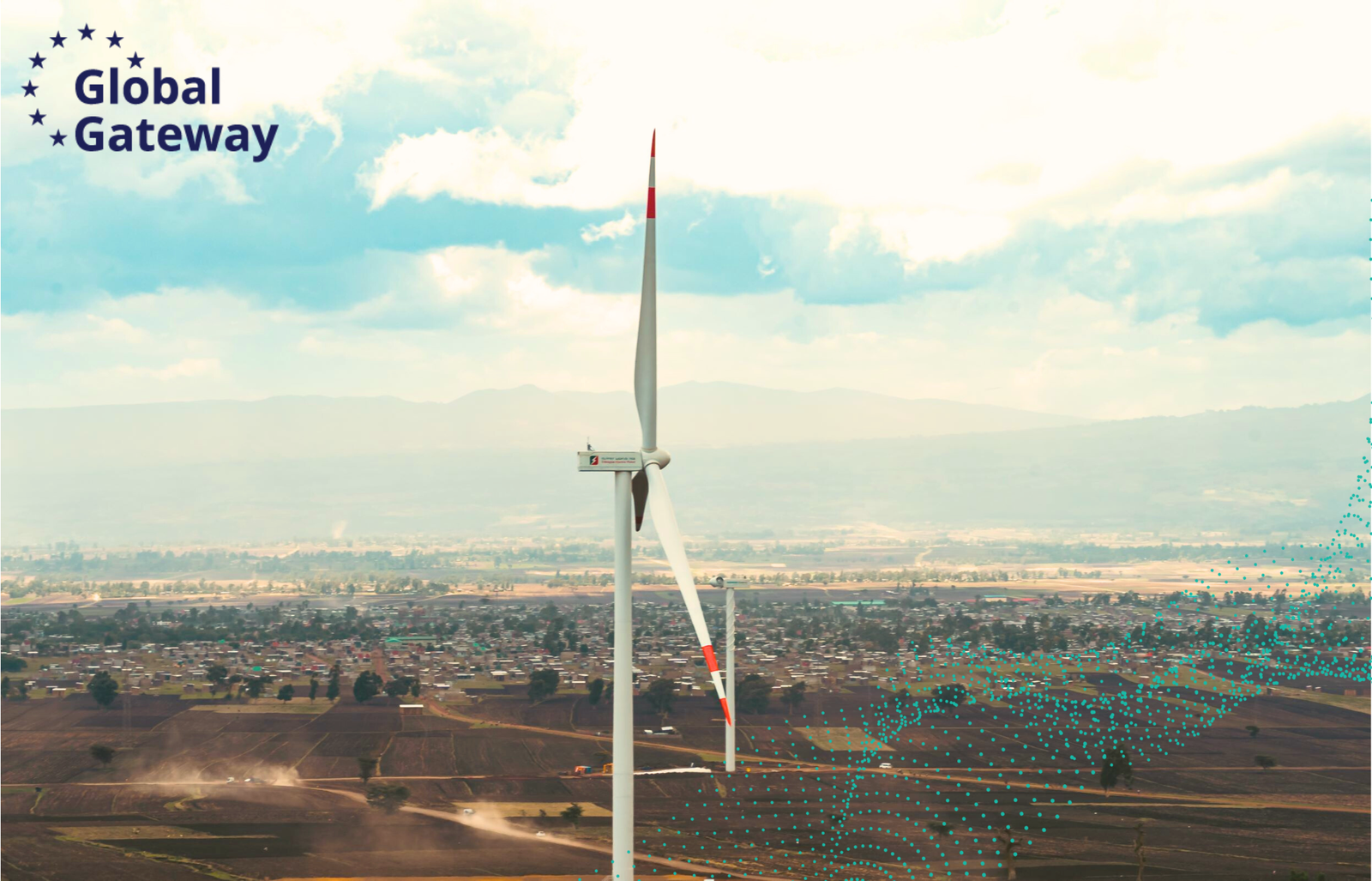France has officially launched its first floating wind farm in the Mediterranean Sea, named “Provence Grand Large.” This facility features three floating turbines with a total capacity of 25 megawatts (MW), designed to contribute to the nation’s energy goals.
The floating wind farm is positioned offshore, utilizing advanced technology that allows it to operate in deep waters, often exceeding 100 meters in depth. Each turbine stands at 174 meters tall and weighs 3,500 tonnes, anchored by two stabilization lines. This innovative floating technology enables the farm to access wind resources in areas that traditional fixed installations cannot reach.
Developed jointly by EDF Power Solutions, a subsidiary of Électricité de France (EDF), and the Canadian company Enbridge, the “Provence Grand Large” project has the potential to supply electricity equivalent to the needs of a city with 45,000 residents. During its testing phase, which began in November 2024, the farm successfully injected 30 gigawatt-hours (GWh) of electricity into the national grid, confirming the project’s economic viability and technical feasibility.
The total investment for this floating wind farm amounts to €300 million, funded through a combination of equity from the partner companies, bank loans, and subsidies from European and local institutions. The operational concession for the site is set for 40 years, while the infrastructure is expected to last 20 years.
The launch of “Provence Grand Large” coincides with plans for two additional floating wind projects in the Mediterranean. The “EolMed” project, located near Gruissan, will feature substantial investment from the private sector, including a 20% stake from Total. Meanwhile, the joint venture Ocean Winds, co-owned by Engie and Portugal’s EDP Renováveis (EDPR), is preparing to install the “Éoliennes flottantes du Golfe du Lion” near Leucate and Barcarès.
These developments highlight the increasing importance of floating wind energy in Europe’s energy landscape. The industry is keen to analyze the economic models and technologies implemented in these projects, as well as their scalability for similar regions. Monitoring the performance of the “Provence Grand Large” farm over the next few years will provide valuable data to refine approaches for future floating wind installations.




